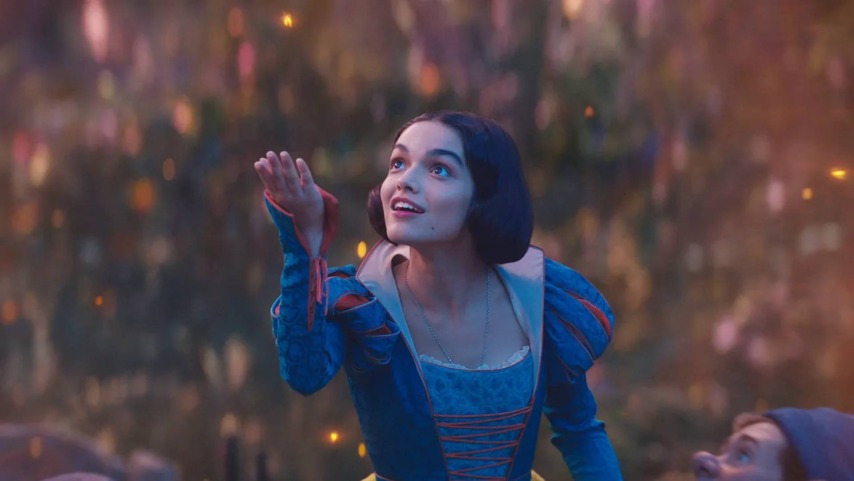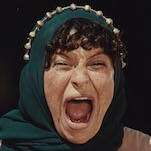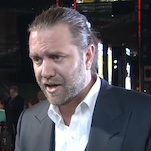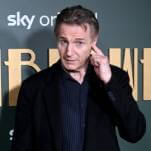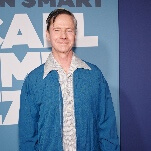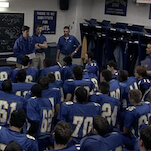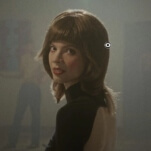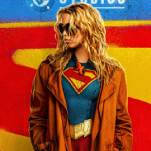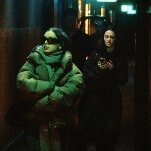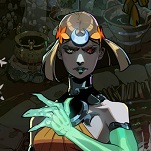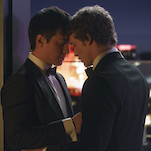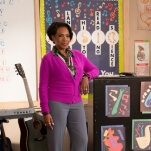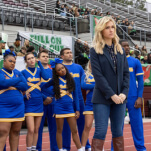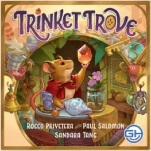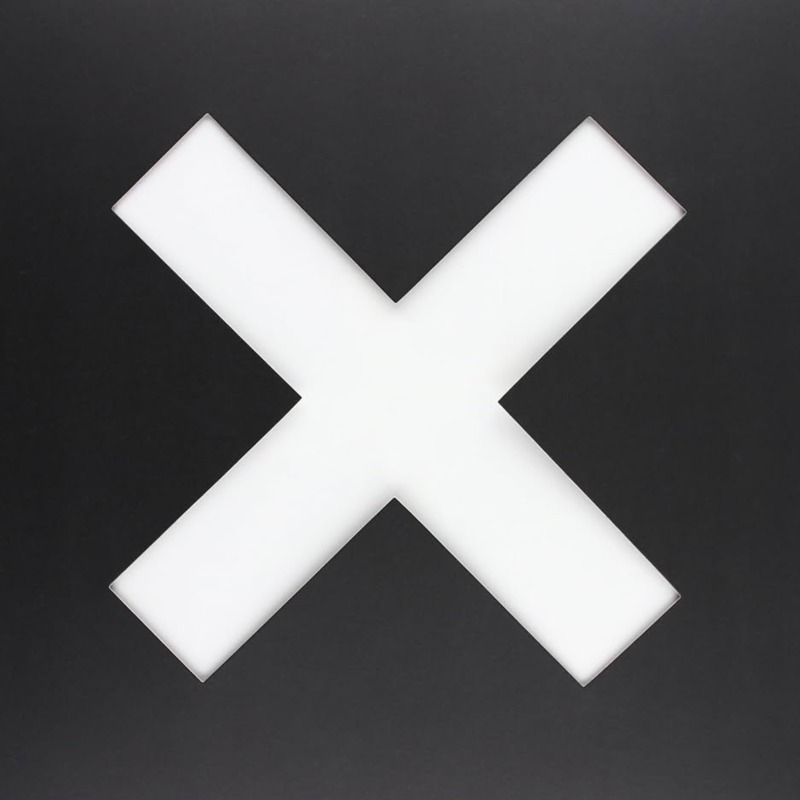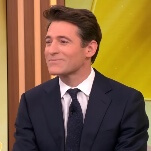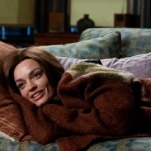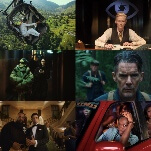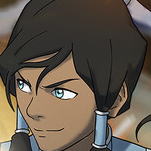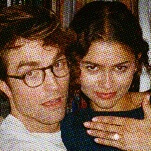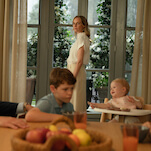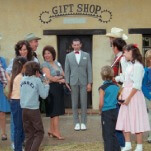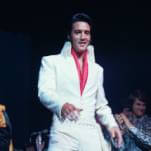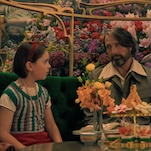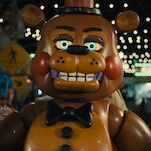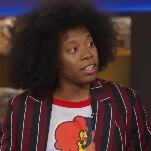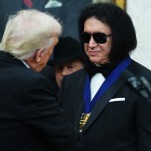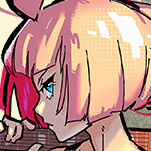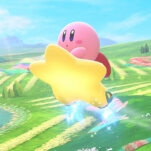Snow White And The Seven Dwarfs changed everything, but there’s not a lot going on in America’s first full-length animated feature. The lush backgrounds, multiplane camerawork, and sweetly emoting woodland critters are all the vital color in the cheeks of its simple tale of jealousy and purity. But as that film approaches 90 years old, Disney made a remake that looks 100 times worse—and, necessarily, has been updated in an attempt to tell a more human tale. Aside from coating the story in a sickly “live-action remake” sheen, like dipping a juicy red apple in a vat of poison, Snow White also pads out its plot so that the character at the center actually has a character, that her love interest is more than a randy stranger in the woods, and that her foe’s villainy is more political than mythic. But the extra half-hour is just as muddled as the misguided classic elements, all of which forge a tarnished tiara to which Rachel Zegler is the single crown jewel.
When Snow White opens, cracking the spine of a storybook and entering a world of bright fabric and Broadway choreography, there is hope that, in the actual colors and twirling townspeople, Marc Webb’s film will embrace the heightened beauty of the original. But this is not to be. The lights quickly dim after the origin story song for Snow White; the colors fade and the energy falls into a death-like slumber. Gal Gadot’s kleptocratic Evil Queen enters like someone wheeled in a mannequin, and the story everyone knows begins to unfold in earnest: A self-obsessed queen attempts to murder her stepdaughter, who escapes into a welcoming wood filled with furry friends and single-trait dwarfs.
Throughout the story’s familiar and revised portions, Zegler’s Snow White attempts to shine through the dreary blockbuster haze, her charisma as blinding as high beams in fog. Easily shifting gears between the pure-hearted role model of fable and a girl with a bit of personality, she navigates Erin Cressida Wilson’s unsteady script more surely than any of those around her. The West Side Story star’s screen presence and singing voice are so winning that even the camera stops to stare, simply holding on her, center frame, as she belts and emotes through Benj Pasek and Justin Paul’s forgettable new songs.
Like so much of the new material, Pasek and Paul’s contributions range from practically-minded pap (the theme-establishing “Good Things Grow”) to atonal snark (the bickering, irony-laden “Princess Problems”). And, like so much of the new material, Zegler manages to work with it—though there aren’t any original tunes that a kid will remember, let alone be humming on their way out of the theater, “Waiting On A Wish” at least gives Zegler an Evan Hansen-like spotlight. These songs were never going to stand up to “Heigh-Ho” or “Whistle While You Work,” earworms whose simplicity lends itself to slapstick, to environmental storytelling, to effortless characterization that extends a hand to children and adults alike. The scenes that play the hits are the best parts of Snow White—even if they do entail looking at the CG abominations this film calls dwarfs.
From their wrinkled skin to their Shenandoah beards, the Doc-led group of fantasy miners are upsetting to behold. They were ostensibly created with VFX to sidestep the issue of whether or not to cast actors with dwarfism in these roles. (Martin Klebba, who voices Grumpy, is the only actor with dwarfism involved with these computerized terrors; George Appleby, who also has dwarfism, plays a heroic human who feels less like a character and more like a cynical piece of reputation management.) But this approach is completely wrong-headed—meaning that their heads are just all wrong. Easter Island noggins bobble on mo-capped bodies, like a horde of Ant-Man MODOKs swarming around Snow White. While technically competent, perhaps a bit floaty compared to their human co-stars, these seven feats of effects wizardry are distractingly uncanny. Aside from their off-putting faces, there is a Hobbit-like intangibility to their underground schtick (not helped by Webb’s predilection for cutting just as an action begins to unfold) and a Hobbit-like discomfort to watching them bumble through their small home, their CG mascot domes threatening to spin everything off its axis.
If heard from another room, the voice acting behind the dwarfs serves its purpose fine—led by George Salazar’s Happy, the roommates crack a couple well-delivered jokes and allow Snow White to pass along life lessons. Dopey, though, gets a frustrating new storyline that is just another misguided attempt to give Snow White a bit more character.
This is not a bad goal. But in order for Snow White to not just be a quiet prim girl to whom things happen, she gets a character mostly built around a quippy romance straight out of Galavant. No longer falling for some vague prince, her love interest is the floppy-haired Robin Hoodlum Jonathan (Andrew Burnap), who steals out of necessity after the Evil Queen ruins the economy by hoarding wealth and starting needless wars. None of this quite fits with the rest of the fairy tale, since these more realistic ideas feel taken from art made to undercut the broad-strokes grandeur that the rest of Snow White strives for.
The same applies to Snow White’s characterization, which positions her as a good-hearted heir learning how best to lead a peasant revolt that places her on the throne. These chaotic political pointers are imparted by men: Jonathan’s street smarts ground the idealized virtues handed down to Snow White by her dead dad, the former king. Her mother, who probably also had some nice things to say, dies without much fanfare or memorial. Such are the ways of Disney.
These ways extend to Gadot’s lifeless Evil Queen, which is a copy of a copy of a copy—high-end cosplay that could be draped over anyone. Her performance is evidence that, where campy Disney villains once provided fertile ground for drag queens, drag queens are now being plagiarized by Disney villains. And badly, at that. Gadot’s droning, stiff performance can’t even come to life when coaxed to vogue during her villain song. It’s too bad there’s already a character in this named Sleepy.
The Evil Queen represents the live-action remake style Disney’s returned to since it started this phase of strip-mining: Empty, contrived mimicry that often just looks like an expensive episode of TV, with a few actors standing around badly lit sets. At best, these takes can achieve simple recognizability. At worst, they drag through their expensive inferiority with misplaced pride, pleased to introduce a new generation to the company’s declining abilities. Snow White, expanding upon an admittedly slight narrative, finds itself in between. For every attempt to replicate majestic shots from the original or to give them a bit of technological oomph (perhaps most effective as sunlight breaks through Snow White’s fearful first trip through the forest), there is a spurt of modern quippiness that pulls the audience in the other direction. It’s a disorienting take on a film whose success relied as much on its elegance as its beauty, and yet, thanks to sunny songstress Rachel Zegler, there is a talented throughline still obvious amidst the mess.
Director: Marc Webb
Writer: Erin Cressida Wilson
Starring: Rachel Zegler, Andrew Burnap, Gal Gadot
Release Date: March 21, 2025
